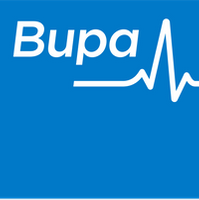Inclusivity: how to create a thriving workplace
Diversity wins: How inclusion matters, a report from the global management consultants McKinsey & Company, points out: "The business case for inclusion and diversity is stronger than ever. For diverse companies, the likelihood of outperforming industry peers on profitability has increased over time, while the penalties are getting steeper for those lacking diversity.”
Amanda Stone, people director at Bupa Global and UK Insurance, believes: “Cultivating a diverse and inclusive working environment is beneficial for everyone. Employee engagement is a key measure for our leaders and we know that inclusion and engagement are highly correlated. It can open opportunities for individuals, reduce the impact of bias and discrimination, and give businesses a real competitive advantage.”
Barriers to inclusion
Christos Tsaprounis, people & culture director at Auto Trader, acknowledges: “There are barriers to inclusion that are deeply rooted into our societal and workplace structures. As a leader in your business you have the opportunity to educate yourself by working with your people to understand their experience at work, the barriers they face, and support them in overcoming them together.”
He adds: “At Auto Trader we run a diversity and inclusion workshop for all employees called ’One Auto Trader’. The workshop is run across 1.5 days and explores in an engaging way what diversity and inclusion means for our business. We create a safe space for colleagues to explore their own biases, how to challenge others in a constructive way and be active allies of inclusion.”
Acas, the Advisory, Conciliation and Arbitration Service, suggests that inclusion starts with recruitment, and that there are a number of simple strategies to ensure hires reflect the diversity of our communities:
- Advertise a job in at least two different places to reach a wide range of people.
- Have more than one person involved at each stage of the selection process.
- Encourage recruiting managers to be aware of unconscious bias.
- Hold back some details, such as the candidates name or sex.
- If possible, have one interviewer on the phone, to avoid decisions based on physical appearance.
An equitable approach
The Equality Act makes it clear that employers should make ‘reasonable adjustments’. This is to accommodate the needs of different staff members.
Stone says: “At Bupa, colleagues can use a ‘This Is Me’ document that prompts an honest conversation between a colleague and line manager to help someone work at their best. It helps to have a very broad conversation about working styles, communication, hours, flexibility, health and wellbeing, as well as physical adjustments. Adjustments are much more than the physical environment.”
Tsaprounis adds: “The important thing about adjustments is not to assume that people with the same disability will need similar solutions. You should tailor adjustments to the needs of the individual, after careful consideration and the advice of experts. At Auto Trader we are guided by our colleagues and allow them the time to work with our people team to explore potential options that can work for them.”
Working from home and hybrid working brings fresh challenges.
Research by McKinsey & Company shows that some under-represented demographic groups prefer hybrid working:
- 11% of employees with disabilities are 11% more likely to prefer hybrid working than those without disabilities
- 13% of LGBTQ+ colleagues were 13% more likely to favour hybrid working than their heterosexual peers
- 14% of staff who identified as non-binary were 14% more likely to seek out hybrid working.
Teams work
The McKinsey research also identified three essentials for an inclusive workplace:
- Team building: Fostering trust, collaboration and healthy conflict among team members.
- Mutual respect: Showing genuine concern for the wellbeing of all team members and an organisation-wide commitment to treat everyone fairly and respectfully.
- Work-life support: Understanding and appreciating employees’ non-work demands, interests and responsibilities.
McKinsey identify that team-building is a priority and advise: “Leaders must embed team-building activities and norms in the organisation’s ways of working.”
But adds: “To stage these events effectively, it is necessary to dig into details: dietary restrictions, comfort with alcohol, event timing, accessibility needs, types of activities, and more. Moreover, managers should be mindful of how much they ask employees to sacrifice their “off” hours – requests that can diminish team cohesion rather than contribute to it.”
Inclusive actions
Steps to build respect and strong teams include:
- Encourage employees to view one another as individuals, not co-workers.
- Ask about each team member’s preferences and boundaries for working styles and communication.
- Check-ins should include personal updates as well as a review of work priorities.
- Reframe mistakes as opportunities to find improvements and encourage staff to learn from each other.
- Celebrate achievements.
As Stone says: “If we want our workplaces to thrive, we have to not only ensure we have a diverse workforce across all levels of the organisation, but also make sure that everyone feels they can be their best version of themselves.”
Supplied by REBA Associate Member, Bupa
Bupa's purpose is helping people live longer, healthier, happier lives and making a better world.








